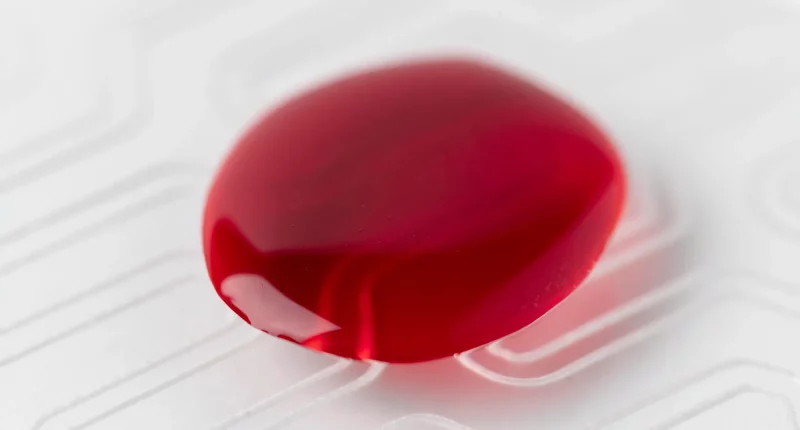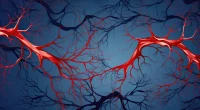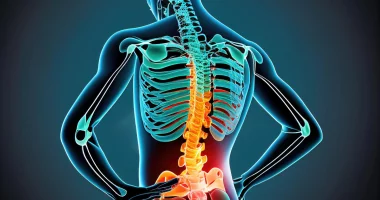Hemophilia is a sickness passed down from parents that makes it hard for blood to clot like it should. Because of this, people with hemophilia can bleed a lot, even when they don’t have any cuts. They might get injuries easily, have nosebleeds often, or see blood in their urine or poop.
The Centers for Disease Control and Prevention (CDC) says that when we get hurt, special proteins and tiny pieces in our blood, called clotting factors and platelets, work together to stop the bleeding.
Most people with hemophilia don’t have enough of two key clotting factors: factor VIII or factor IX. In this way their blood takes longer to clot post injury, and they’re more likely to have bleeding inside their bodies.
The CDC doesn’t know exactly how many people have hemophilia, but they think around 33,000 men had it in the U.S. between 2012 and 2018.
Causes
Hemophilia mostly comes from genes passed down in families. It’s something you’re born with. The CDC says it’s a type of disorder linked to certain genes.
It’s more common in men. This is because of how genes work. Men get one X chromosome from their mother and one Y chromosome from their father. Women get two X chromosomes, one from each parent.
The problem gene for hemophilia is on the X chromosome. Men only have one X chromosome, so if it has the problem gene, they’ll have hemophilia.
Women can have hemophilia too, but it’s rare. For them to have it, both X chromosomes need the problem gene, or one X chromosome has it and the other one isn’t working or missing.
Sometimes, the gene problem happens out of nowhere, not because it runs in the family. And rarely, someone might get hemophilia even if it’s not in their family history. This type is called acquired hemophilia. It’s when the body’s immune system mistakenly attacks the blocking factors in the blood.
Von Willebrand disease
Von Willebrand disease (vWD) is another genetic problem that makes people bleed a lot. It can cause things like nosebleeds, gums that bleed easily, and really heavy periods.
About 1% of people in America have vWD, as stated by the CDC.
It affects every gender equally, but women tend to notice the symptoms more. This is because women have periods, and during that time, they might bleed more than usual. They might also have heavy bleeding after having a baby.
Types of Hemophilia
There are 2 main types of hemophilia: type A and type B. These both types can be mild, moderate, or severe.
- Mild: About 25% of events are mild. Individuals with mild hemophilia have factor levels between 6–30%. This means their blood doesn’t clot as well as it should, but not as badly as in moderate or severe cases.
- Moderate: Around 15% of events are moderate. Those with moderate hemophilia have factor levels between 1–5%. They tend to bleed more than those with mild hemophilia but less than those with severe hemophilia.
- Severe: Most events, about 60%, are severe. Individuals with severe hemophilia have factor levels less than 1%. This means their blood doesn’t clot well at all, and they’re at higher risk of bleeding.
Hemophilia A is more common than hemophilia B. It happens because the body doesn’t have enough factor VIII clotting factor. Many people with hemophilia A have the severe form.
Hemophilia B, also called as Christmas disease, occurs because of a lack of factor IX clotting factor. It’s less common than hemophilia A, affecting about 1 in over 25,000 males world widely born.
Symptoms
Hemophilia shows different signs depending on how serious it is. Here are some common ones:
- Bruising: Getting bruises easily, even from small bumps or knocks.
- Hematomas: This happens when there is the muscles or soft tissues are bleeding inside, which leads to swelling.
- Bleeding from the gums and mouth: Sometimes gums bleed a lot, especially after brushing teeth.
- Bleeding after a circumcision: For men, this might happen after the foreskin is removed.
- Blood in the stool or urine
- Frequent and hard-to-stop nosebleeds: Nosebleeds that happen often and take a long time to stop.
- Bleeding after shots: Blood might ooze out after getting vaccinated.
- Joint bleeding: This can cause pain and swelling, especially in severe cases.
The symptoms can vary depending on how serious the hemophilia is.
- Mild: Bleeding from the nose, gums, or mouth and easy injuries, and bleeding after dental work or injuries. Sometimes, symptoms might not show up until adulthood.
- Moderate: More bruising than usual, and bleeding a lot after injuries or surgeries. Doctors often figure out moderate cases by the time a person is 5 or 6 years old.
- Severe: Bleeding can happen suddenly, especially in joints or muscles, leading to pain and inflammation. If not treated, it can cause arthritis in the joints. Doctors often spot severe cases when the person is just a baby.
Diagnosis
To figure out if someone has hemophilia, doctors do a few things:
- Check Symptoms: They ask about any bleeding problems and see if they match signs of hemophilia.
- Physical Exam: Doctors look at the person’s body to see if there are any signs of bleeding or other issues.
- Medical History: They ask about the person’s past health problems and if anyone in their family has had hemophilia.
- Blood Tests: These tests show how fast the blood clots and if there are enough clotting factors. Clotting factors are like the helpers that make blood stick together when there’s a cut. If they’re missing or not working right, it could mean hemophilia. Blood tests also help figure out which type of hemophilia someone has and how bad it is.
Treatment
While there’s no cure for hemophilia yet, doctors have ways to manage it effectively.
The treatment aims to replace the lost protein and prevent problems. They do this by replacing or giving the clotting elements that the body doesn’t have enough of.
These clotting factors can come from human blood or be made in a lab. The lab-made ones are called recombinant clotting factors. Doctors often prefer these because they lower the risk of passing on infections from blood. But nowadays, screening techniques have made human blood safer.
There are two main types of treatment:
- Prophylactic therapy: Some people need regular treatment to stop bleeding before it starts. This is known prophylactic therapy. Doctors often suggest this for people with severe Hemophilia A.
- Demand therapy: This is when treatment is given only when bleeding happens and won’t stop. People with mild hemophilia might only need this kind of treatment.
Alternative treatment options
There’s a new medication known as emicizumab-kxwh, approved by the FDA in 2018. It’s for people with hemophilia A, with or without factor VIII inhibitors. This medication is given as a shot under the skin and helps reduce or stop bleeding episodes.
At first, a person gets a dose of 3 mg/kg at least once in a week for 4 weeks. After that, they may get regular shots about 1–4 weeks, regulated by the dose.
Other treatments for hemophilia A along with desmopressin, which is a hormone that helps release stored factor VIII, antifibrinolytic meds, which help stops blocks from breaking down.
For hemophilia B, doctors might prescribe medications like Rebinyn or Rixubis, which replace Factor IX.
Sometimes, treatment can lead to problems. These can include growing antibodies to the medications or getting viral infections from the clotting elements.
Treatment can also cause blood clots. So, it’s important to start treatment early to lower the risk of muscle, joint, and other body damage.
Summary
Hemophilia is a sickness passed down from parents that makes you bleed a lot. It can cause things like lots of bruises, nosebleeds, and even bleeding inside your body if it’s severe.
It mostly affects men because the problem gene is on the X chromosome, and men only have one of those.
People with hemophilia can usually handle it with treatments like replacing the missing clotting factor and making some changes in their lives.









